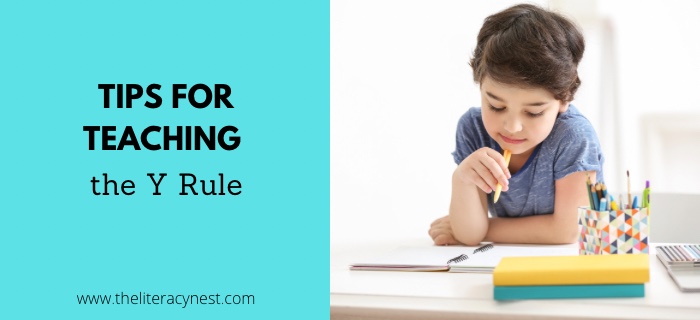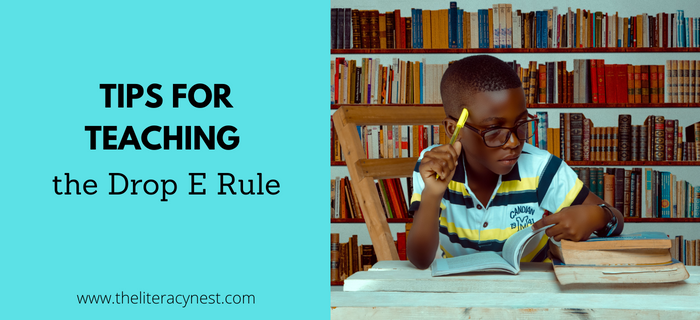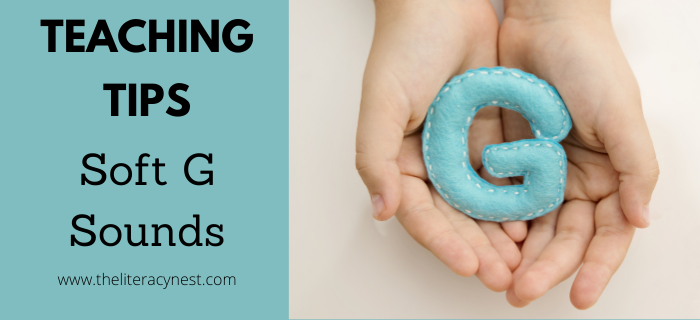Tips for Teaching the Y Rule

The suffixing rules represent a challenging but important set of spelling generalizations. They allowed students to write a wide variety of sentences using the full range of verb tenses. Learning these suffixing rules, like the Y Rule, puts students on the path to avoiding many spelling pitfalls and being able to successfully navigate the writing challenges of their school day.
There are three main suffixing rules:
- The doubling rule (read our post about teaching the doubling rule)
- The drop e rule (read our post about teaching the drop e rule)
- The y rule.
In previous posts, we discussed the doubling rule and the drop e rule. Today we will be looking at the y rule rule. Stay tuned for more posts in this series.
The y rule is perhaps the most difficult of the 3 for students to master.
What is the Y Rule and How Do We Use It?
The y rule states that when a word ends in a y that is not part of a vowel team and you add a suffix, you change the y to an i before adding the suffix. Unlike the other two rules, this applies to both consonant and vowel suffixes, except for suffixes beginning with i.
For example, if you have the word copy and add the suffixes -ed, and -er, you wind up with copied and copier. But the word play would keep the y and become played and player.
The rationale for this rule is less clearcut than the other suffixing rules. It even applies when the y that is being changed is a suffix itself. So, when mud changes to muddy it uses the doubling rule, but to make muddier, you must also use the y rule.
When you add –s to a word ending with y, such as when forming a plural or 3rd person singular present tense, you must change the y to i and add -es as in cries or bunnies.
Unlike the other suffixing rules, the y rule applies to consonant suffixes too. If you add a consonant suffix such as in the word merriment the y in merry changes to i, and in beautiful the y from beauty changes to i.
The final element of the rule is a tricky one. For suffixes starting with i, you do NOT change the y you simply add the suffix. So copy + ing = copying. The reason for this is that we don’t have 2 i’s appearing next to each other in English. The two obvious exceptions are skiing (a Norwegian word) and Hawaii (from the Native Hawaiian language in which this pattern is not uncommon).

Exceptions to the Y Rule
One complicating factor with this rule is that over time certain alternate spellings of common words have become alternate correct spellings, or one is correct in British English and one in American English. For example, to say that someone is more shy in England would be spelled shyer but in America as shier. Drier is an adjective meaning more dry and dryer is a noun meaning an appliance to dry something. Meanwhile, shy, dry, sly and spry often do not change when adding –ly or –ness thus becoming shyly, dryness, slyly, and spryness. Although shily, drily, slily, and sprily are also in the dictionary as correct spellings, shiness, driness, sliness, spriness are not.
There are also a few exceptions where words with a vowel team ending in y do change. For example: day becomes daily, pay becomes paid, say becomes said, lay becomes laid, and slay becomes slain.
When to Teach the Y Rule
There are some important prerequisites for learning the y rule.
- Students need familiarity with identifying the base word, prefixes, and suffixes.
- Students need to be familiar with the suffix -y and with adding multiple suffixes to a word.
- Students need to understand the distinction between consonant suffixes and vowel suffixes.
- Students also need a solid understanding of vowel teams.
- Additionally, students need to know an assortment of common suffixes including both vowel and consonant suffixes.
I typically teach this suffixing rule after students are comfortable with both the doubling rule and the drop e rule. Finally, it is helpful if students are familiar with V/V syllable division patterns and the /ē/ sound for the letter i.
How to Teach the Y Rule
Download our printable guide to teaching the Y Rule!
1. Sort
When teaching this rule, I often begin with a sort to help students differentiate between a y alone at the end of a word and a y that is part of a vowel team. This differentiation is important to ensure a solid foundation for the material that follows.

2. Display the rule
Next, it is helpful to display a poster with the y rule that explicitly shows the steps. This rule is well suited to an interactive flow chart or a checklist like the 1.1.1 rule.
- Are you adding a suffix? Does the word end in y?
- Is there a consonant before the y?
- Are you adding a suffix that does NOT begin with i?
- If all 4 of these are true, then change the y to I and add the suffix.
3. Demonstrate and practice
Then, using word cards or magnetic letters to demonstrate, have the student practice adding suffixes to base words ending in y. Show what happens if you change the y to i before ing or ish. You wind up with two i’s in a row.
Explain that sometimes even adults make spelling errors with this rule.
Practice with words that contain multiple suffixes. Having students physically remove the letter y and insert the letter i using big movements makes this memorable.
Download our Reading and Spelling Generalizations freebie sampler! It includes mini posters, a note-taker, and a handy cheat sheet with links to blog posts and a video with teaching tips!
Provide Extra Practice
This rule is one that will likely need to be revisited often, especially when other new particularly complex concepts are learned. It is also a rule that students tend to forget about when they are using multiple suffixes in a word. When correcting students, don’t just allow them to automatically change the y to an I, but talk through the process to be sure they understand the steps to take to reach this conclusion. When multiple spelling rules apply, it is worthwhile to take students all the way back to the base word and build the word step by step.
Looking for resources to practice the Y Rule with your students? Check out Orton-Gillingham Spelling Rule: Y Rule Multisensory Practice.
Don’t forget the power of playing games. When students play games that require them to check and apply their suffixing rules, it gives them more opportunities to solidify their understanding and build mastery. Plus, they have fun doing it.
Suffixing rules lend themselves both to games focused on an individual rule such as the doubling rule or drop e, or games that require students to choose which of the suffixing rules applies. This necessitates higher-level thinking that more closely resembles applying the rules in the context of written work. The positive associations of playing games can aid memory and retrieval of associated concepts.
Are you looking for a list of words that use the Y Rule? Word List Builder has got you covered!
Save time searching for words that follow the Y Rule! Build your folder of words and create templates in Word List Builder.










